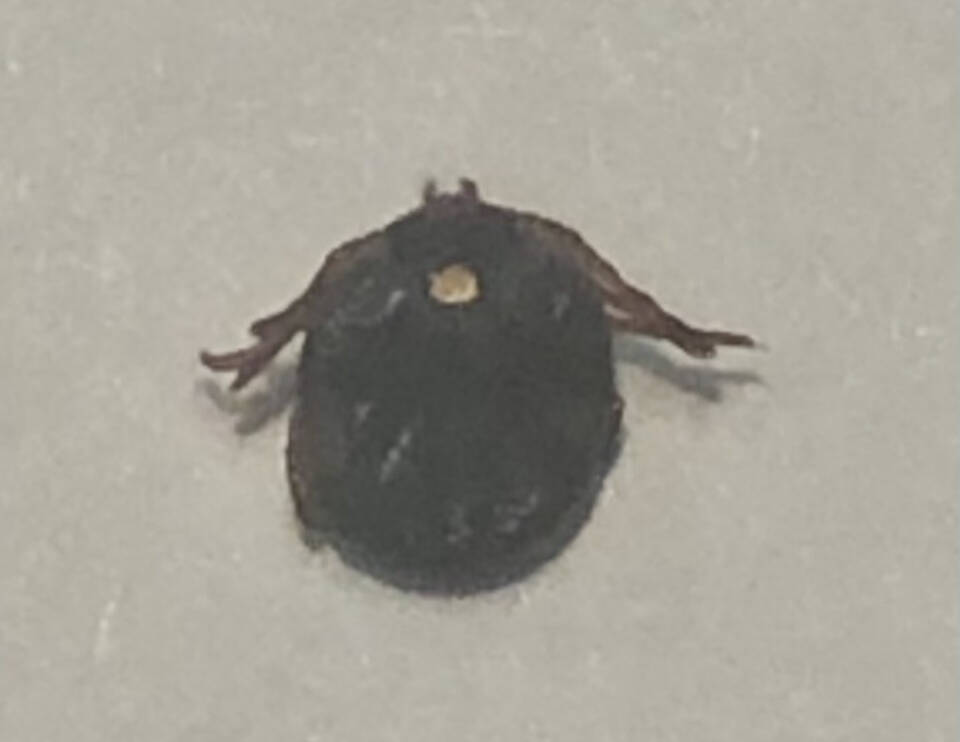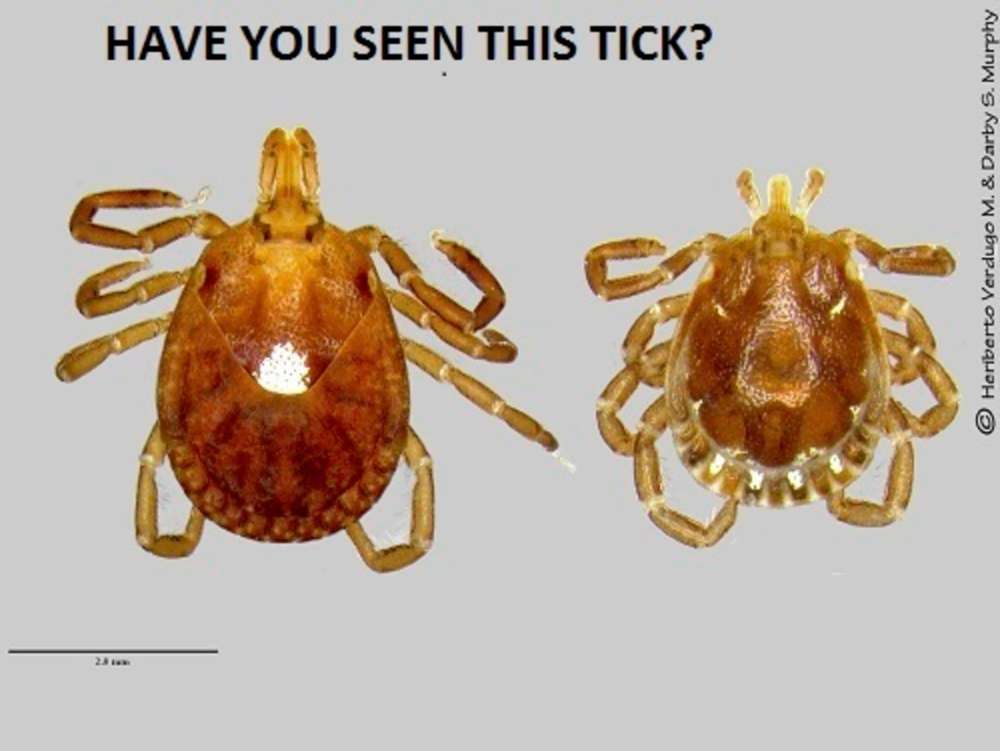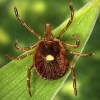‘It’s something else to look out for’
Ticks that cause allergy to meat, dairy spotted in Manitoba
Advertisement
Read this article for free:
or
Already have an account? Log in here »
To continue reading, please subscribe:
Monthly Digital Subscription
$0 for the first 4 weeks*
- Enjoy unlimited reading on winnipegfreepress.com
- Read the E-Edition, our digital replica newspaper
- Access News Break, our award-winning app
- Play interactive puzzles
*No charge for 4 weeks then price increases to the regular rate of $19.00 plus GST every four weeks. Offer available to new and qualified returning subscribers only. Cancel any time.
Monthly Digital Subscription
$4.75/week*
- Enjoy unlimited reading on winnipegfreepress.com
- Read the E-Edition, our digital replica newspaper
- Access News Break, our award-winning app
- Play interactive puzzles
*Billed as $19 plus GST every four weeks. Cancel any time.
To continue reading, please subscribe:
Add Free Press access to your Brandon Sun subscription for only an additional
$1 for the first 4 weeks*
*Your next subscription payment will increase by $1.00 and you will be charged $16.99 plus GST for four weeks. After four weeks, your payment will increase to $23.99 plus GST every four weeks.
Read unlimited articles for free today:
or
Already have an account? Log in here »
Hey there, time traveller!
This article was published 05/09/2023 (832 days ago), so information in it may no longer be current.
A Winnipeg man is warning people to be on the lookout for a rare tick that can cause an allergy to red meat, after one was found embedded in his dog’s skin.
Dean Mason was surprised when a groomer discovered a lone star tick, distinguishable by a white dot on its back, on his miniature goldendoodle, Tika, on Aug. 29.
“She brought it to my attention because she had never seen a tick like that before, either,” said Mason. “You could tell right away it was different.”

SUPPLIED
Dean Mason believes his 11-year-old Tika picked up the tick during a walk between his Charleswood home and Caron Park.
Mason believes 11-year-old Tika picked up the tick during a walk between his Charleswood home and Caron Park.
Sherry Shears, who runs Sherry Shears Pet Grooming, said she spotted the tick near the dog’s collar line, thinking it was a mole at first.
She removed it, put it in a jar and used photos on the internet to identify the species.
“It had a white spot on it, which I’ve never seen before in my 20-plus years of grooming,” she said. “It’s something else to look out for.”
Mason said the City of Winnipeg’s insect control branch confirmed the tick was of the lone star variety.
Favouring warmer climates, lone star ticks are aggressive and have spread through southern and eastern U.S. states. They are named after the white dot that is only on the backs of adult females.
In July, the U.S. Centers for Disease Control and Prevention reported a dramatic spike in people developing a potentially life-threatening allergy to red meat or dairy products from lone star tick bites.
It said more than 100,000 Americans had developed alpha-gal syndrome since 2010, while declaring AGS an emerging public health problem with lifetime impacts for some.
The true number could be closer to 450,000, given many people may not have been tested for the condition, the CDC said.
Alpha-gal is a sugar molecule found in meat from most mammals and the saliva of lone star ticks.
The molecule can enter a person’s bloodstream when bitten, triggering an immune response and future allergic reactions when they eat red meat or ingest products with alpha-gal.
There is no treatment or cure for AGS.

SUPPLIED
Mason said the City of Winnipeg’s insect control branch confirmed the tick was of the lone star variety.
The bacteria transmitted by lone star ticks can cause illness in dogs, but it is not common and illness is usually mild, said the Public Health Agency Of Canada.
Seven ticks confirmed in Manitoba
Including the lone star tick found on Tika, there have been seven confirmed discoveries — four on humans and three on animals — in Manitoba since July 2022, according to eTick.ca, a public surveillance website created by a team at Bishop’s University in Sherbrooke, Que.
Six were reported this year.
The other reported locations were in two backyards and a field in Winnipeg, possibly along a bike path in the Rural Municipality of East St. Paul, somewhere in the RM of Taché and a farm in the RM of Wallace-Woodworth.
Tick experts said lone star variety is still rare and not yet established in Canada, but warming associated with climate change could lead to populations here.
The arachnids are known to hitch a ride on migratory birds which arrive from the U.S. Most of the discoveries in Canada happen in Ontario and Quebec.
“The tick is heading north and that’s why we’re vigilant for it,” said Quebec-based Dr. Nicholas Ogden, director of the public health risk sciences division at the National Microbiology Lab in Winnipeg.
Kateryn Rochon, an associate professor and acting head of the University of Manitoba’s entomology department, said the spike in reported discoveries in the province is likely to due people becoming more aware of lone star ticks and eTick.ca, rather than an expanding population.
“We don’t have these ticks reproducing here. The ones we find come from somewhere else,” she said. “We’re not expecting them to become established soon, because our conditions are not suitable. But, those conditions are changing.”
“We’re not expecting them to become established soon, because our conditions are not suitable. But, those conditions are changing.”–Kateryn Rochon
For the few Canadians who’ve developed AGS from a tick bite, it’s more than likely the bite occurred during their travels to the United States, said Ogden.
Symptoms can include a rash, nausea or vomiting, diarrhea, difficulty breathing, swelling of the lips, dizziness and severe stomach pain, according to the CDC.

They usually appear two to six hours after eating food or being exposed to products containing alpha-gal.
Rochon said more research is needed to understand how tick bites lead to AGS and why some ticks don’t cause it.
Lone star ticks are also capable of transmitting some infectious diseases, including ehrlichiosis, which causes flu-like symptoms.
They have not been shown to transmit Lyme disease.
Fall is a peak season for blacklegged ticks, which can carry Lyme disease.
Rochon said lone star ticks appear paler in colour compared with other ticks commonly found in Canada, and their mouth parts longer than those of other ticks.
She and Ogden encouraged people to report discoveries on eTick.ca, which has received 109 reports of lone star ticks in Canada since 2017.
chris.kitching@freepress.mb.ca
Twitter: @chriskitching

Chris Kitching is a general assignment reporter at the Free Press. He began his newspaper career in 2001, with stops in Winnipeg, Toronto and London, England, along the way. After returning to Winnipeg, he joined the Free Press in 2021, and now covers a little bit of everything for the newspaper. Read more about Chris.
Every piece of reporting Chris produces is reviewed by an editing team before it is posted online or published in print — part of the Free Press‘s tradition, since 1872, of producing reliable independent journalism. Read more about Free Press’s history and mandate, and learn how our newsroom operates.
Our newsroom depends on a growing audience of readers to power our journalism. If you are not a paid reader, please consider becoming a subscriber.
Our newsroom depends on its audience of readers to power our journalism. Thank you for your support.
History
Updated on Wednesday, September 6, 2023 5:10 PM CDT: Updates characteristics of ticks




